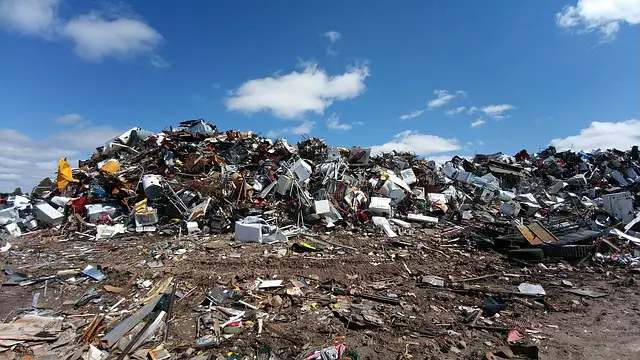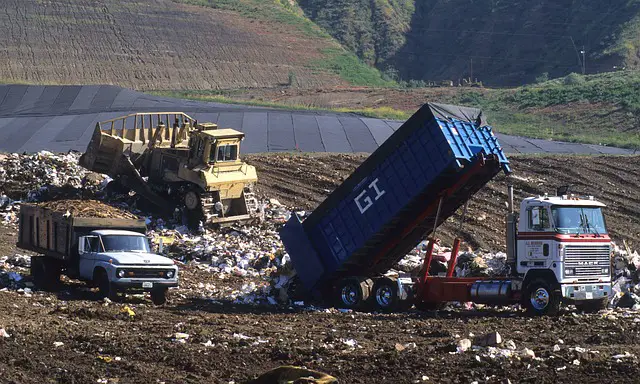Introduction
Proper management of solid waste is critical to the health and well-being of urban residents. In most developing cities, several tons of garbage are left uncollected on the streets each day, acting as a feeding ground for pests that spread disease, clogging drains and creating a myriad of related health and infrastructural problems. The urban poor – often residing in informal settlements with little or no access to solid waste collection and often in areas that are contiguous with open dumps – are particularly vulnerable. While urban residents in developing countries produce less solid waste per-capita than in high-income countries , the capacity of their cities to collect, process, dispose of, or re-use solid waste in a cost-efficient, safe manner is far more limited. Municipal SWM efforts often focus on expensive ‘end-of-pipe’ measures, those involving the collection and disposal of solid waste, yet many of the ‘best practices’ for SWM improvement are far more accessible and cost-effective opportunities involving waste reduction programs and recycling strategies.
The global solid waste management Market Size is projected to reach USD 366.52 billion by 2027, exhibiting a CAGR of 3.3% during the forecast period. The challenges to be faced in collecting solid waste will dramatically increase in the next 30 years as a result of both the rapid growth of developing cities and increases in per capita waste production. It was once believed that increases in per capita waste went hand-in-hand with economic growth, but recent trends in developed countries show that aggressive efforts to reduce, recycle and reuse can break this link. Environmentally-sound urban SWM strategies should address unsustainable patterns of consumption and production. A framework for improved urban SWM combines the expansion of safe collection and disposal with measures designed to minimize trash production and promote the recycling, reuse or recovery of resources from solid waste. Fortunately for those involved in urban SWM, there is a great deal of experience represented in the literature on SWM, ranging from appropriate technologies and financing strategies to sanitary landfill development and the importance of community participation.

Also Read: Modern Techniques of Solid Waste Management in India
Sources of Solid Waste
Tonnes of solid waste is disposed of to dumping grounds every day. Major sources of these wastes are:
- Residential: Single and multifamily dwellings are one of the primary sources of solid waste. Types of waste that the residential sector produces include plastics, food waste, leather, wood, glass, metals, papers, ashes, and other items like electronics, batteries, tires, used oil, and more.
Solid waste from homes, condos, and apartments is generally collected and treated by a garbage collecting firm. - Industrial: Industries contribute largely to the production of solid waste. Typical waste generators are construction sites, manufacturing industries, power and chemical plants. Types of solid waste produced by the industries include food, packaging and housekeeping waste, ashes, construction, and other hazardous waste like asbestos.
- Commercial: Commercial buildings like hotels, offices, restaurants, and stores are another significant source of solid waste. Waste from this sector includes food wastes, plastics, rubber waste, packaging materials, paper, glass, metals, wood, and other bulky items.
- Institutional: Universities, schools, courts, prisons, and other government centres also contribute to solid waste production. Institutional waste comprises plastics, food waste, wood, rubber items, metals, paper, cardboard, and garbage that poses a threat to the environment.
- Construction And Demolition: Construction, renovation and demolition sites also produce solid waste. Types of waste include concrete, wood, steel, plastics, glass, rubber, dirt, etc.
- Treatment Sites: Treatment plans and sites produce scrap materials, industrial process wastes, plastics, metals, and other hazardous wastes. They include manufacturing and processing plants, refineries, power and chemical plants, etc.
- Municipal Services: Streets, parks, water treatment plants, and recreational areas contribute immensely to the production of solid waste. Types of waste generated include street waste, dead leaves, tree trimmings, other waste from the park, sludge, landscaping wastes, etc.
- Agriculture: Pesticides, spoiled food, and other agricultural wastes are the types of solid waste produced by vineyards, orchards, farms, dairies, and feedlots.
- Biomedical: Biomedical waste refers to the waste generated by hospitals and pharmaceutical firms. It includes syringes, drugs, food waste, plastics, rubber, surgical gloves, equipment, etc.
Program Considerations
Supportive Policy Environment
The central government (and sometimes regional governments) play an important role in establishing a policy environment that supports good SWM practices at the local level:
- Enabling legislation (to protect public health, the environment and ensure safe handling practices)
- Regulations and standards (permits, licenses, inspections for landfills, emissions from incinerators, etc.)
- Enforcement (financial and criminal penalties)
- Solid waste planning (recycling and waste reduction targets)
- Market incentives for recycling (beverage container deposits, minimum percent recycled content)
Choosing Appropriate Technologies
All cities must weigh a number of factors in choosing appropriate technologies for collection and disposal of solid waste.
Collection
Municipalities often spend as much as 70% of their operating budgets for SWM on hauling costs alone due to rising transportation costs, outdated, poorly maintained machinery and inefficient existing collection routes. Although cities are responsible for SWM within their jurisdictions, they do not necessarily have be owners and operators of SWM systems. In developing their own comprehensive SWM plans, cities should determine the extent of private and community service provision. The city can issue franchises or licenses to various firms who will compete for customers or can select one firm per district/area based on a competitive procurement. Experience has shown that private sector SWM costs 20-40% less than the same publicly-provided services and that privatization of SWM and facilitating the entry of micro- and small-scale providers contributes to the adaptation of ‘best-practices’ and appropriate technologies. However, SWM authorities must be aware that such a shift usually requires both a decrease in employment in the waste sector [link to: World Bank’s Urban Waste site: Private Sector Participation] and an institutional shift of focus for public-sector SWM authorities from service provision to oversight and regulation (both to ensure that companies are meeting the relevant standards and that they are not colluding).

Disposal and its alternatives
When planning for the adoption of solid waste technologies, SWM authorities should consider the following, among other, issues:
- The planning, construction and implementation of new sanitary landfills are costly and lengthy, and small to medium-scale solid waste management practices will be needed in the interim.
- The tendency for municipalities to import expensive “end-of-pipe” technologies, such as collection vehicles and processing plants, often leads to additional unsustainable costs in training, repair and site maintenance.
- Dump-upgrading, involving such measures as landfill liners, mandated landfill disposal standards, and low-cost remediation, along with improved waste minimization strategies may prove to be cost-effective alternatives to the development of expensive new SWM sites.

Recycling, composting, resource recovery, and resale of reusable solid waste can be an effective way of minimizing waste and contributing to the economic welfare of those living at a destitute fringe within the urban community. For example, co-composting solid waste and sewage sludge produces soil conditioner and shredded automobile tires that can be added to soil to increase drought resistance. Other way is to help informal scavengers who may collect 10-15% of urban solid waste. Using recycling, reuse and “landfill mining” techniques to become more efficient and established business, cities can reduce their overall urban solid waste production by up to 30%. This assistance may help in developing cooperatives or other similar methods of labor organization and providing basic protective health and safety precautions (e.g. providing gloves and masks) for the avoidable environmental health risks these workers face.
Effective SWM, particularly when targeting informal settlements, should begin with a consultative, participatory process involving all stakeholders from slum residents and the informal sector trash workers to the municipal government and the private sector. Community-based enterprises, incentives for increased private sector participation and innovative multi-sectoral partnerships are often used to more effectively implement policy objectives such as:
- Recycling and waste minimization programs
- Resource recovery and commercial/industrial marketing or resale of reusable components of waste
- Localized appropriate technologies designed to meet economic, environmental and social preferences
- Adoption of cleaner production practices
- Separation and control of hazardous waste to reduce the distribution of their environmental impacts
- Improved institutional management and increased citizen oversight
Health
Most municipal solid waste is haphazardly dumped on public lands or unprepared landfills in an unmanaged or unregulated manner. Toxic runoff, pollution of water and soil resources, methane gas emission from unregulated landfills, and unstable areas subject to settling that often later become informal settlements are just a few of the environmental and health challenges resulting from poor SWM. Uncontrolled dumping greatly endangers the immediate health of both informal sector waste workers and nearby inhabitants, typically the poor residents of informal urban settlements, through direct hand-to-mouth contamination and inhalation of volatile chemicals and other pollutants. Additionally, uncontrolled dumping has adverse effects for all urban residents – impacting the public health of the city at large through water supply, air and soil contamination. Authorities must consider the public health impact of their current SWM strategies as well as the health benefits and cost-effectiveness of alternative strategies for upgrading SWM – e.g., whether to emphasize landfill improvements, expansion of solid waste collection, or other measures as an initial investment priority.
Also Read: Solid Waste Management Methods
Note: The article above is not written by Planning Tank/ Its members or contributors. It is a part of number of valuable information which is now lost because the original source of this content has been deleted/ moved/ inaccessible/ archived. We are making an attempt to bring valuable content from over the internet and other sources which we believe will be helpful for people. We do not own any rights to this content. For any queries/ complaints/ feedback/ removal requests kindly contact us through email.